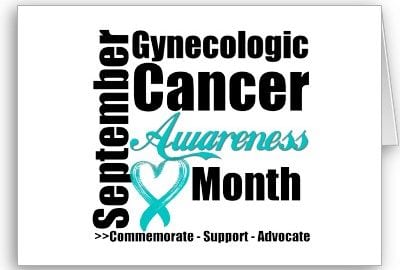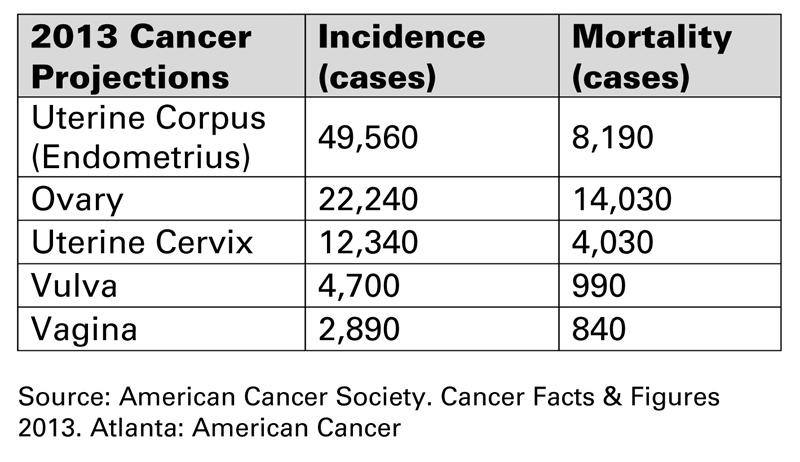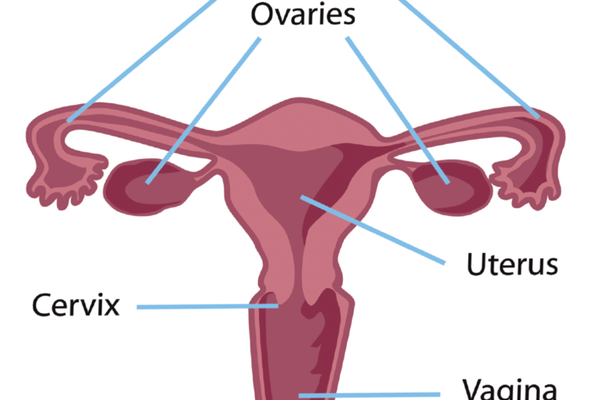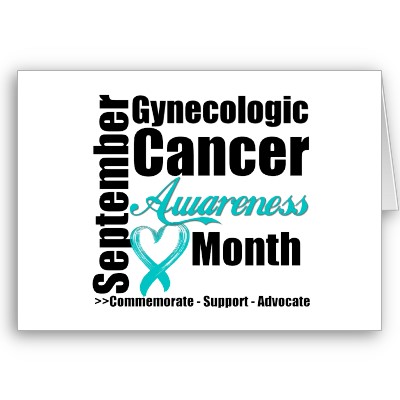September is Gynecological Cancer Awareness month, and the challenge is to become empowered through knowledge in an effort to avoid becoming a victim. Consider this post your “essentials” for awareness and prevention. The group of gynecologic cancers include cervical, ovarian, uterine, vaginal and vulvar. This Straight, No Chaser will provide a quick overview on the three most common types (uterine, cervical and ovarian cancers) and will be followed by posts on each.
General considerations:
- All women are at risk for gynecologic cancers.
- Generally, risk increases with age.
- Treatment is most effective after early detection.
Cervical cancer:
- How you get it – It is thought to be caused by a virus named the Human Papilloma Virus.
- How you address it – It is preventable if you get vaccinated before you become sexually active, and risk is lowered by not smoking. Detection occurs by Pap smears as recommended by your gynecologist or family doctor.
- What to look for – There are usually no early symptoms, although you should be alarmed by the presence of bleeding after intercourse or between menstrual periods, or by the presence of excessive and persistent vaginal discharge.
Uterine/Endometrial Cancer (the most common gynecological cancer)
- How you get it – Family histories of endometrial or colon cancers are important contributors to subsequent development of uterine cancer. Additional risk factors are the use of estrogen alone or use of the drug tamoxifen. Uterine cancer usually occurs around menopause.
- How you address it – Your best bet is to reduce your risk by managing your weight and keeping blood pressure and blood sugar under control. You must be diligent here; routine Pap tests do not detect uterine cancer.
- What to look for – Vaginal bleeding after menopause or the presence of irregular or very heavy bleeding in younger women could be signs.
Ovarian Cancer
- How you get it – Risk factors notably include increasing age and obesity. Protective considerations include early use of birth control pills and carrying a pregnancy to term delivery by age 26.
- How you address it – You really must have a conversation with your physician about ovarian cancer. There is no screening exam or test for it. Your best protection is to learn and reduce the risks, and you should promptly seek evaluation in the presence of symptoms.
- What to look for – Symptoms can be easily attributed to other problems. If symptoms persist for more than a few weeks, don’t delay getting evaluated. Such symptoms include bloating, abdominal or pelvic pain, difficulty eating or quick sensations of feeling full and urinary frequency or urgency.
Although these are topics that you likely would prefer not to think about, they represent disease that you really don’t want to endure, so learn the risks, lower them through prevention and keep your regularly scheduled appointments. If you develop one of these cancers and get detected early, you’ll be very glad you took these simple steps.
Thanks for liking and following Straight, No Chaser! This public service provides a sample of what 844-SMA-TALK and http://www.SterlingMedicalAdvice.com (SMA) offer. Please share our page with your friends on WordPress, Facebook @ SterlingMedicalAdvice.com and Twitter at @asksterlingmd.
Copyright © 2014 · Sterling Initiatives, LLC · Powered by WordPress.





